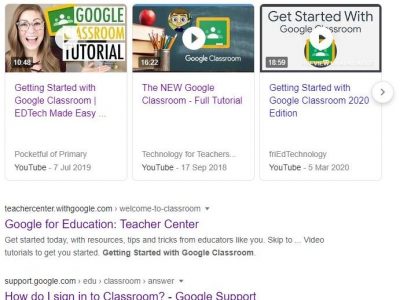I have previously commented that both giants’ (Google and Microsoft) make a substantial contribution to education and that I foresee little will change in education for most leaders and less so for most teachers, though there is serious potential to do so.
Post lockdown there will be encouragement, expectation even, for greater use of blended learning for students (remote learning less so), there will be more blended and remote learning opportunities for staff as it has shown it’s potential already. However I am most interested in leveraging cloud-thinking, both collaboration and workflow automation, for more effective systems, processes, teaching and learning. Both will be gradual, with workflow automation slower to be adopted than collaboration. Why? It requires greater trust of one another and of the technology. Finally, I have also highlighted greater voice of speech control and transcription (eg your video conference meetings can already be transcribed – instant meeting minutes).
With June, July, September in mind, over the past few weeks I have been working primarily in the Google ecosystem – exploring the integration of G Suite, Google Drive, Classroom and Chrome from a personal account. The “personal account” definition is important, as there are a number of different Enterprise products, price points and plans (storage, search, security and device management) and the administration overview is important. Updates on all things Google (particularly G Suite and Classroom) are available via the cannily named G suite updates blog. For an broader overview, I read 9 to 5 Google and for hardware I read Chromeunboxed. (☠ Google Reader RIP ☠). Very quickly, it is clear that “all-things Google” is a sizeable portfolio and that it generates a lot of news and updates, daily in fact. It is just about possible to stay in touch with all the developments.
Making the most of the Giants’ offering
For education, this thinking is potentially best presented in three strands – Strategy, Change Management (the cloud-thinking piece) and Operational, which includes both blended and remote, learning and working.
Strategy – your context and which giants’ strategy / product best fits your context is the starting point. Security, access and control, and the level of support available are questions that are well answered by both giants. Hardware (price point) is possibly one of the interesting discussion points at present with rapid developments in both Surface devices and Chromebooks, not forgetting mobile devices.
Changement management is where the ‘work’ is at and as I stated, the area for the greatest opportunities. To shift stakeholder working (schools, governors, leaders, teachers, staff, students, parents) towards cloud thinking: collaboration and workflow automation. As with most organisational changes, this is about first growing an awareness and desire to make the change. Supporting the knowledge of ‘how to change’ and then developing the abilities, skills and behaviours required in the ‘future state’ before making the move, and then reinforcing that change – making it stick.
With knowledge of the constraints of your context, it is essentially down to the strength of change management abilities and ambitions. I will continue to share my own “cloud thinking” successes and pitfalls, as I find them and discuss them with other school cloud practitioners.


